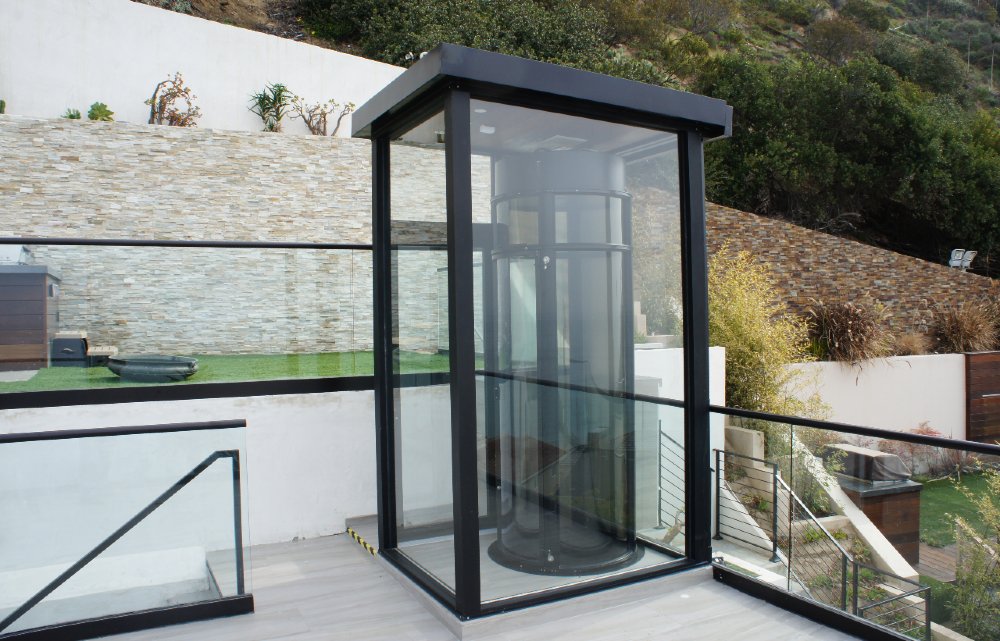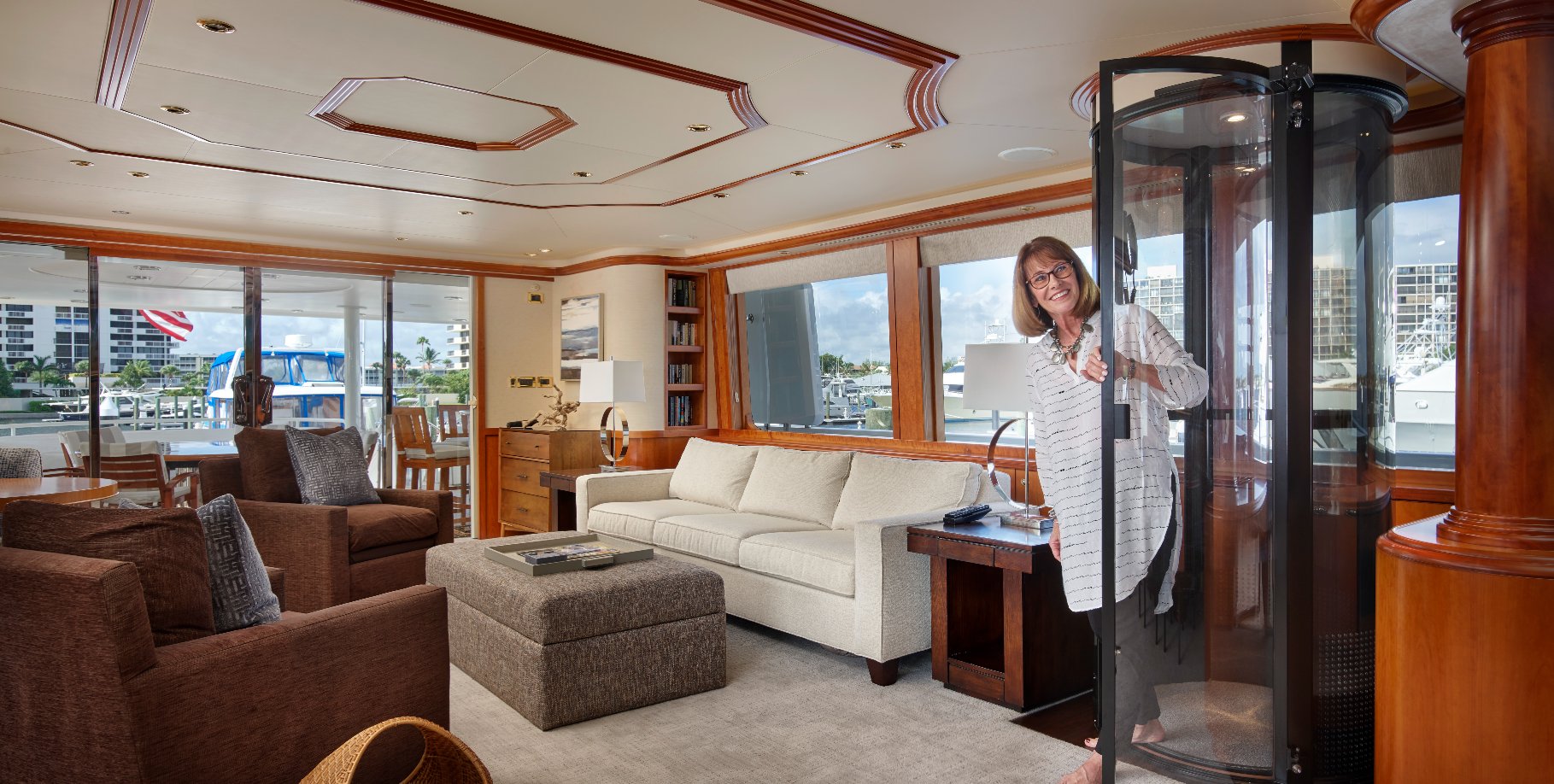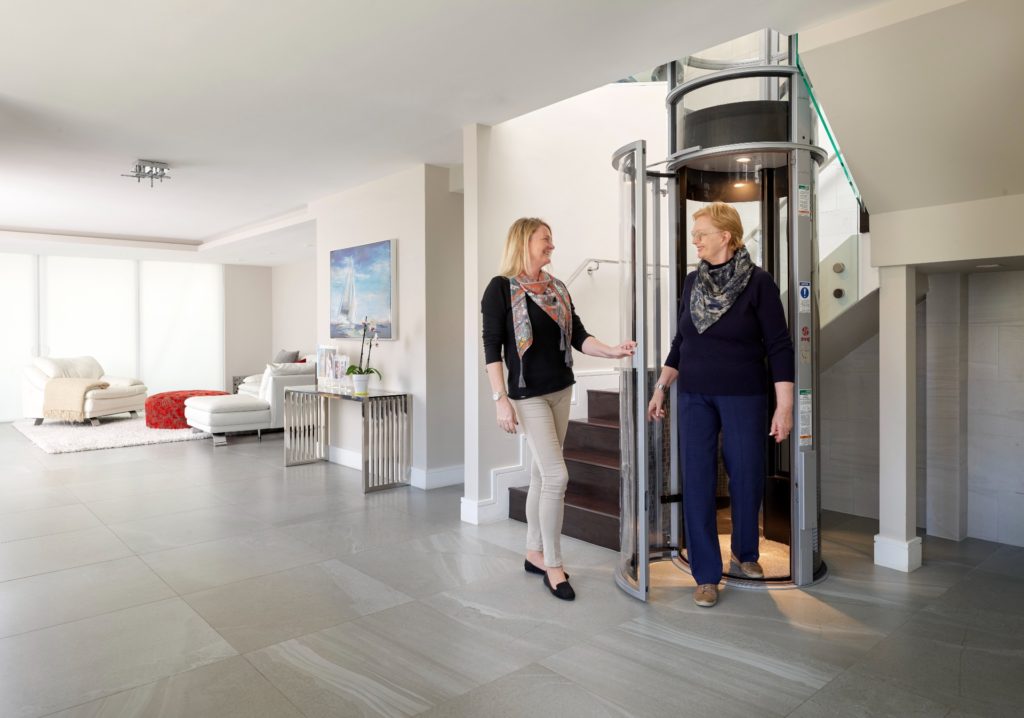
Imagine effortlessly gliding between floors in your own home, the convenience and accessibility enhancing your quality of life. Residential elevators are becoming increasingly popular, and a crucial element of your personal lift is the door. Not only does it ensure safety, but it also sets the tone for your home’s aesthetics.
This comprehensive guide delves into the fascinating world of residential elevator doors, equipping you with the knowledge to make informed decisions for your dream home lift.
Understanding the Different Types of Residential Elevator Doors
Landing Doors:

- Swing Doors: The most common and cost-effective option, available in manual or automatic versions. Manual doors typically swing outwards, while automatic doors use sensors for hands-free operation. Both offer a variety of finishes to match your style.
- Sliding Doors: Similar to commercial elevators, these sleek doors provide a luxurious feel and require minimal space. Ideal for tight landings or modern aesthetics, they often come with automatic operation for added convenience.
Car Doors:

- Single Swing Doors: The standard option, opening inwards or outwards based on space constraints. Manual or automatic operation ensures ease of use, while finishes can personalize the look.
- Bi-Folding Doors: Perfect for tight spaces, these doors fold neatly against the sides of the car, maximizing entryway width. Popular in modern designs, they often feature automatic functionality.
- Accordion Doors: Offering a space-saving solution, these folding doors are similar to bi-folding doors but with more panels. Available in manual or automatic options, they often have a classic or utilitarian appearance.
Material Options:
- Metal: Durable and available in various finishes, including stainless steel, powder-coated steel, and bronze. Offers a modern or industrial aesthetic.
- Wood: Provides a warm and natural feel, with options like oak, cherry, and maple. Consider finishes that match your home’s interior design.
- Glass: Creates a light and airy ambiance, often integrated with metal frames for stability. Ideal for contemporary designs with good natural light.
Key Considerations When Choosing Residential Elevator Doors:

Safety:
- Entrapment prevention features: Look for doors with sensors to stop movement if an object is obstructed.
- Interlocks: Ensure doors remain locked while the elevator is in motion and only open at designated floors.
- Emergency override options: Access for service personnel or rescue should be readily available.
Design and Aesthetics:
- Match your home’s style: Choose materials and finishes that complement your existing décor.
- Transparency and light: Consider glass panels for a brighter feel, especially in tight spaces.
- Personalization: Some manufacturers offer custom finishes or even the ability to incorporate artwork into the door panels.
Functionality and Space:
- Automatic vs. manual: Automatic doors offer convenience, while manual doors can be more cost-effective.
- Door swing direction: Ensure enough clearance for opening and closing, especially with swing doors.
- Space constraints: Opt for space-saving solutions like sliding or bi-folding doors if necessary.
Budget:
- Compare prices of different door types, materials, and finishes to find options that fit your budget.
- Consider long-term costs, including potential maintenance needs.
Additional Tips for Choosing Residential Elevator Doors:
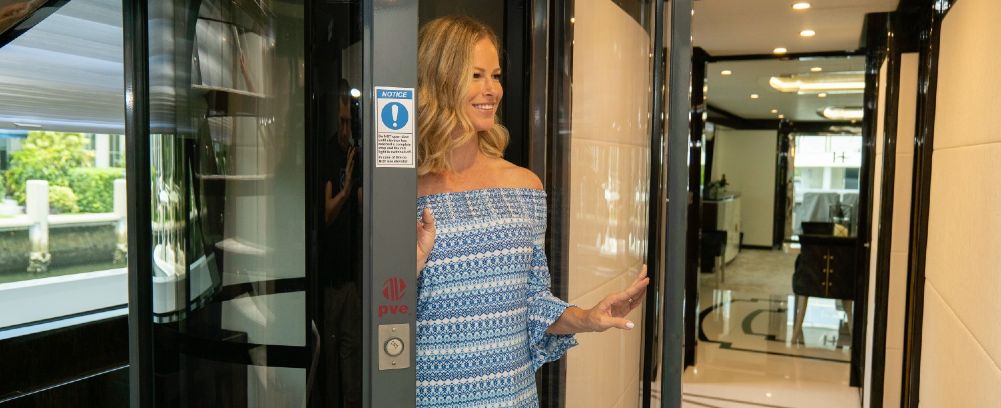
- Consult with a professional: An elevator expert can advise on the best options for your specific needs and home design.
- Request samples: See how different materials and finishes look and feel in person.
- Consider future needs: If you have mobility limitations, automatic doors might be an essential investment.
- Explore smart features: Some doors offer touchless activation or integration with smart home systems.
Ensuring Safety with Regulations and Codes
While aesthetics are important, the primary function of a residential elevator door is ensuring safety for all users. To achieve this, manufacturers and installers must adhere to strict regulations and codes established by national and international organizations. Here’s an overview of the key standards:
National Safety Code for Residential Elevators (ASME A17.1/CSA B44)
This widely adopted code, developed by the American Society of Mechanical Engineers (ASME) and the Canadian Standards Association (CSA), sets forth comprehensive safety requirements for all residential elevators, including their doors. Key provisions related to doors include:
- Entrapment prevention: The code mandates specific gap limitations between car and landing doors to prevent entrapment, particularly for small children. These include a maximum 3/4-inch gap for swinging doors and a design that rejects a 4-inch diameter test object for all door types.
- Interlocking systems: Doors must interlock with the elevator control system, ensuring they remain locked while the elevator is in motion and only open at designated landing levels.
- Emergency provisions: The code requires readily accessible emergency release mechanisms for both car and landing doors in case of power outages or malfunctions.
- Material and construction standards: Materials and construction methods for doors must meet specific strength, fire resistance, and durability requirements.
Additional Regulations and Codes
- Americans with Disabilities Act (ADA): This federal law ensures accessibility for individuals with disabilities. While not directly addressing residential elevators, certain ADA provisions might apply depending on the elevator’s intended use and location.
- International Organization for Standardization (ISO): The ISO publishes various standards related to elevator safety, including those for door operation, control systems, and emergency features. These standards are often adopted by individual countries alongside national codes.
- Local Building Codes: In addition to national codes, states and municipalities might have their own building codes with specific requirements for residential elevators and their doors. It’s crucial to consult local authorities to ensure compliance with all applicable regulations.
Staying Informed and Compliant
Regularly checking for updates and changes to relevant codes is essential for homeowners and professionals involved in residential elevator installations. Reputable elevator manufacturers and installation companies stay informed and ensure their products and services comply with the latest standards.
By understanding and adhering to these regulations, you can be confident that your residential elevator door provides the highest level of safety for you and your loved ones, creating a truly secure and enjoyable experience.
Frequently Asked Questions about Residential Elevator Doors:
Safety Questions:
- Are automatic doors safer than manual doors? While both manual and automatic doors can be safe when properly installed and maintained, automatic doors offer additional safety features like touchless activation and automatic reopening upon obstruction. Consider your specific needs and preferences when making this decision.
- What safety features are included in residential elevator doors? Standard safety features typically include entrapment prevention sensors, interlocks that prevent movement with open doors, emergency release mechanisms in both car and landing doors, and fire-resistant materials. Some models might offer additional features like voice intercom or automatic phone dialing in case of emergencies.
- Do I need to comply with any specific regulations when choosing a door? Yes, several national and local regulations govern residential elevator doors. The ASME A17.1/CSA B44 code sets the baseline safety standards, while the Americans with Disabilities Act (ADA) and local building codes might have additional requirements. Consult with a qualified elevator professional to ensure compliance.
Design and Functionality Questions:
- What materials are most commonly used for residential elevator doors? Metal (stainless steel, powder-coated steel), wood (oak, cherry), and glass are popular choices. Each offers unique aesthetic and functional benefits. Consider your design preferences, budget, and desired level of transparency and light.
- What kind of door is best for a small space? Sliding or bi-folding doors provide space-saving solutions by minimizing swing radius. Consider the available clearance and door opening direction when making your choice.
- Can I customize the look of my elevator door? Yes, many manufacturers offer various finish options for doors, and some even allow custom artwork integration. Discuss your personalization preferences with your chosen elevator company.
- Do elevator doors require regular maintenance? Yes, regular maintenance inspections and adjustments are crucial for optimal performance and safety. Consult your elevator service provider for recommended maintenance schedules and procedures.
Cost and Installation Questions:
- How much do residential elevator doors typically cost? Costs vary depending on door type, material, size, customization level, and automatic vs. manual operation. Expect prices to range from a few thousand dollars to several thousand dollars.
- What factors influence the installation cost? Complexity of the installation, required modifications to your home, and additional features like automatic operation can impact the cost. Obtain quotes from qualified professionals for accurate estimates.
- Who should install my residential elevator door? It’s highly recommended to hire a licensed and certified elevator technician with experience installing doors specific to your elevator model. Improper installation can compromise safety and void warranties.
Unveiling the Doors of PVE Residential Elevators: Innovation Meets Style
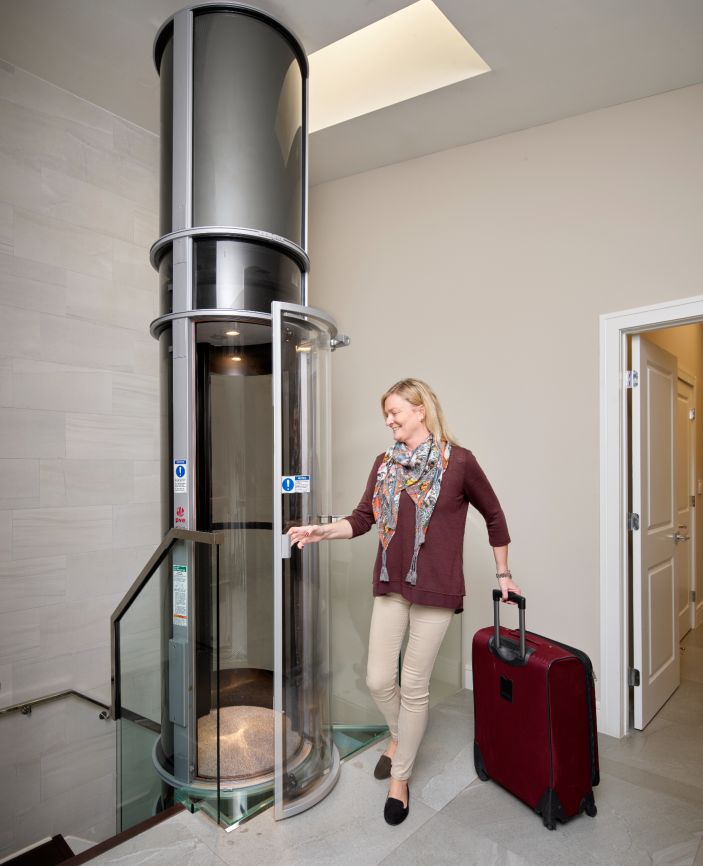
PVE, a leading name in pneumatic vacuum elevator technology, goes beyond mere functionality when it comes to their residential elevator doors. Their doors seamlessly blend innovation, safety, and aesthetic appeal, crafting an effortless transition between floors while complementing your home’s unique style.
Safety First: A Cornerstone of PVE Door Design
PVE prioritizes safety in every aspect of their elevators, and their doors are no exception. All PVE doors adhere to the strictest safety standards, complying with ASME A17.1/CSA B44 and other relevant regulations. Here’s how they ensure your peace of mind:
- Entrapment Prevention: Precise engineering and safety sensors guarantee minimal gaps (3/4″ for swinging doors) and reject objects to prevent accidental entrapment, especially safeguarding children.
- Interlocking Systems: Doors remain locked while the elevator moves, opening only at designated landings for secure travel.
- Emergency Release: Conveniently located emergency release mechanisms in both car and landing doors provide access in case of power outages or malfunctions.
- Durable Materials: Fire-resistant and high-strength materials ensure door integrity and protection even in unforeseen circumstances.
PVE offers a diverse range of door options to match your aesthetic preferences and space limitations:
Beyond Aesthetics: Smart Features for Elevating Convenience
PVE incorporates cutting-edge technology into their door systems:
- Touchless Activation: Eliminate the need for physical contact with optional sensor-based opening mechanisms, promoting hygiene and convenience.
- Smart Home Integration: Integrate your elevator doors with smart home systems for seamless control and voice-activated operation.
Trust the Experts: Click For Professional Installation and Maintenance

